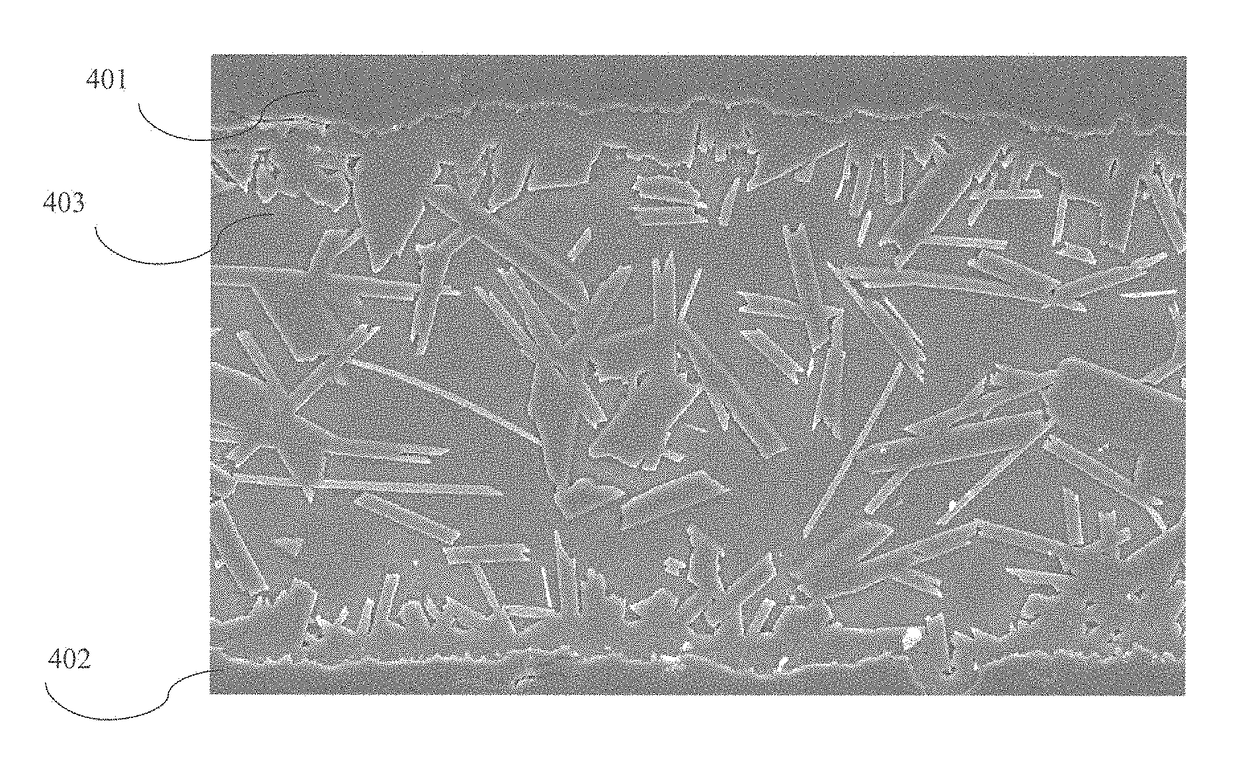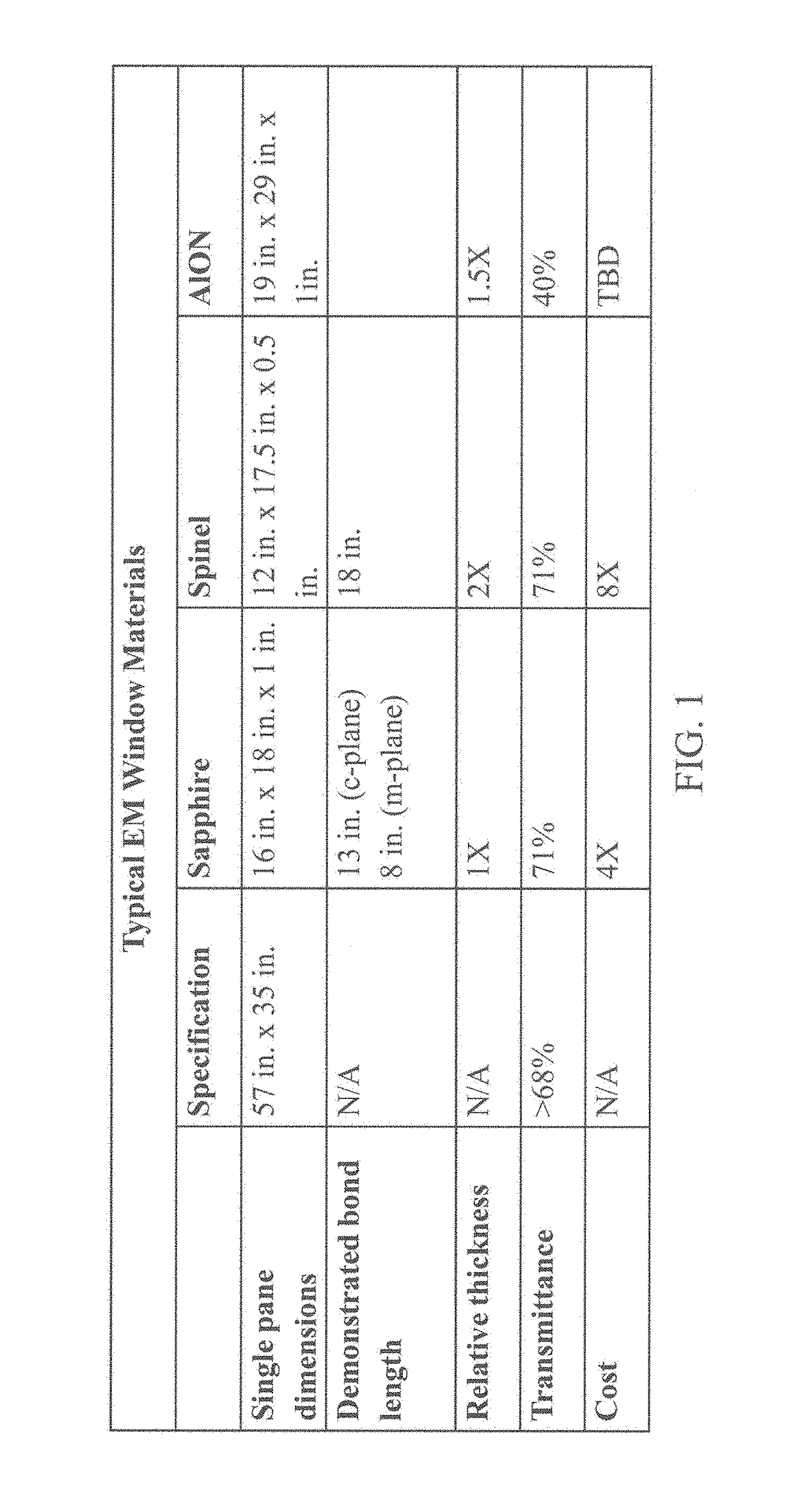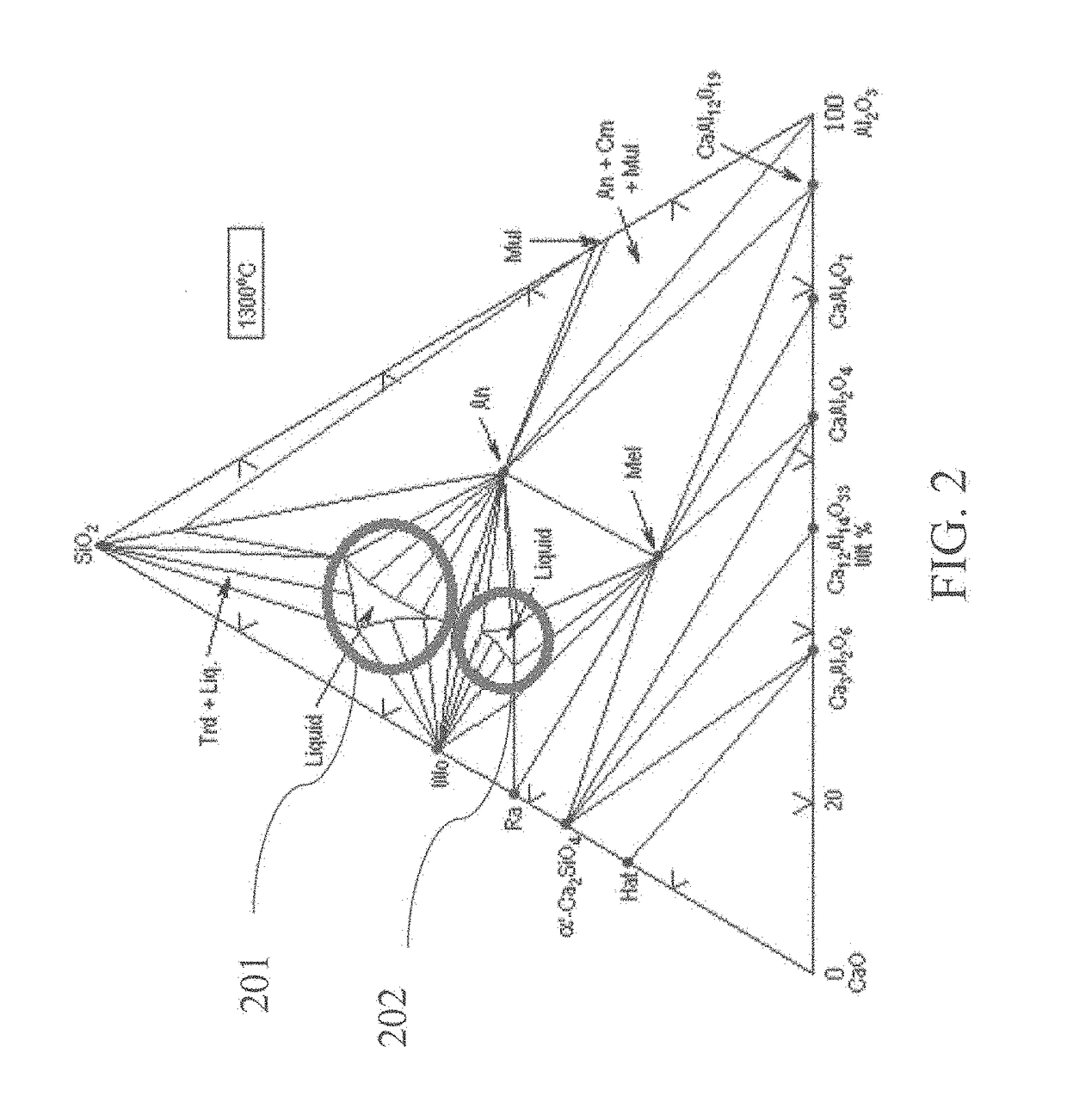Large area format sapphire windows via transient liquid phase bonding
a technology of liquid phase bonding and sapphire windows, which is applied in the direction of crystal growth process, after-treatment details, instruments, etc., can solve the problems of limited optical bonding scale to what, compromising the mechanical integrity of the window, and limiting the dimensions of sapphir
- Summary
- Abstract
- Description
- Claims
- Application Information
AI Technical Summary
Problems solved by technology
Method used
Image
Examples
example 1
onding Region
[0054]To construct and test the behavior and physical properties of a c-plane crystal sapphire window, window material and eutectic material were prepared and combined as discussed above. Due to the crystalline structure of single crystal sapphire, sapphire sheets may be formed in various planar orientations including c-plane, m-plane, r-plane, and a-plane. C-plane single crystal sapphire has homogenous properties that may provide advantages over other orientations. As used herein, the term “c-plane single crystal sapphire” refers to substantially planar single crystal sapphire, the c-axis of which is substantially normal (±10°) to the major planar surface of the material. Typically, the c-axis is less than about 1° from the major planar surface. The sapphire c-plane is as is known in the art and is typically the sapphire plane having a Miller index of 0001 and d-spacing of 2.615 Angstroms.
[0055]As shown in FIG. 3A at 1,000 times magnification and FIG. 3B at 5,000 times...
example 2
onding Region
[0061]A-plane sapphire has a thermal expansion mismatch in the various directions, requiring better alignment of the c-planes and m-planes when bonding the a-planes. As such, a-plane is more orientation dependent and attention to orientation of the mating planes is required. A misorientation of about ±5 degrees of the c- and m-plane can be accommodated without cracking.
[0062]To construct and test the behavior and physical properties of an a-plane crystal sapphire window, a-plane crystal sapphire window material and eutectic material were prepared and combined as discussed above. The window materials 801 and 802 shown in FIG. 8A at 84 times magnification and FIG. 8B at 1,000 times magnification comprise a-plane crystal sapphire. A-plane crystal sapphire is orientation-dependent, and a slight mismatch in orientation results in cracking. In this test, the eutectic material 803 comprises calcium aluminosilicate. The process included heating window materials 801 and 802 and ...
example 3
onding Region
[0063]M-plane sapphire is a mirror plane, and if it is not bonded in the exact orientation of the c-planes and a-planes of the two windows, the bond will crack on cooling. M-plane bonds require perfect alignment of the a-plane and c-plane orientations in the m-plane or the bonds will crack. This is often times difficult to achieve and may be impractical. As long as two orthogonal axes can be bonded (e.g., c- and a-planes), then windows can be tiled to achieve the desired larger dimensions. While the c-plane can accommodate slight misorientation, the m-plane cannot accommodate any misorientation.
[0064]To construct and test the behavior and physical properties of an m-plane crystal sapphire window, m-plane crystal sapphire window material and eutectic material were prepared and combined as discussed above. In this test, window materials 901 and 902 are m-plane crystal sapphire and the eutectic material 903 comprises calcium aluminosilicate. Like the a-plane crystal sapphi...
PUM
| Property | Measurement | Unit |
|---|---|---|
| temperature | aaaaa | aaaaa |
| size | aaaaa | aaaaa |
| size | aaaaa | aaaaa |
Abstract
Description
Claims
Application Information
 Login to View More
Login to View More - R&D
- Intellectual Property
- Life Sciences
- Materials
- Tech Scout
- Unparalleled Data Quality
- Higher Quality Content
- 60% Fewer Hallucinations
Browse by: Latest US Patents, China's latest patents, Technical Efficacy Thesaurus, Application Domain, Technology Topic, Popular Technical Reports.
© 2025 PatSnap. All rights reserved.Legal|Privacy policy|Modern Slavery Act Transparency Statement|Sitemap|About US| Contact US: help@patsnap.com



